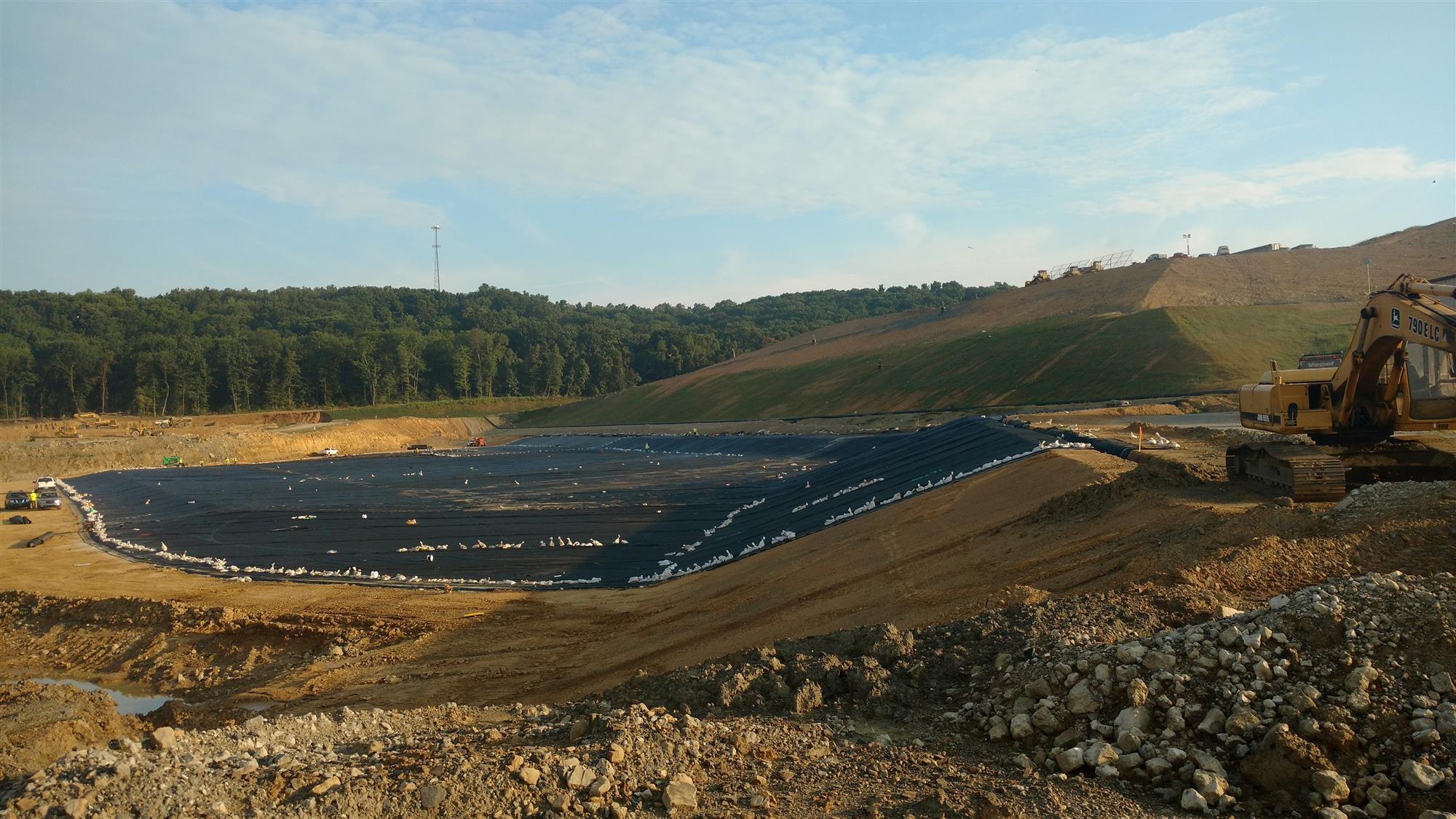Latest News #1 – Cell 13 Advanced Liner System
The winter and summer of 2017 were busy as usual for Seneca Landfill as development of our advanced liner systems continued with the construction of Cell 13A. Cell 13A is approximately 5.5 acres and took approximately 9 months to construct. Seneca Landfill employs over 35 employees and equipment operators who perform the earthwork and prepare the soils for the installation of the advanced liner system that makes up a new cell. As part of cell construction, Seneca relocated over 200,000 yards of old waste from pre-regulatory unlined cells to our new advanced liner system to continue to clean up the environment. After being excavated and brought to grade, Seneca contracts with a 3rd party to install the advanced dual contained liner system. Cell 13A was lined with our advanced dual lined containment system consisting of a secondary liner system and a primary liner system for a total of seven (7) layers of protection. The secondary liner system is first placed on the soil subgrade and consists of: a geosynthetic clay liner (GCL); 60-mil high-density polyethylene (HDPE) geomembrane; and a geocomposite drainage layer, used for leak detection. The primary liner system goes on top of the secondary liner system and consists of: a second GCL, a second 60-mil HDPE geomembrane, a 32-ounce non-woven geotextile, and 12-inches of protective cover gravel. You can see the liner installation steps on our website by clicking the following link: http://www.senecalandfill.com/landfill-liner-installation.
Our cell construction is observed, documented, and certified by a 3rd party engineer and the Pennsylvania Department of Environmental Protection prior to us placing waste in the cell. Seneca landfill also performs a leak detection test on the liner system to confirm construction was performed properly and there are no defects in the work performed by the 3rd party contractors. Seneca started placing waste into the new Cell 13A on October 14, 2017.
.jpg) Cell 13A Waste Relocation (12-30-16)
Cell 13A Waste Relocation (12-30-16)
 Cell 13A – Subgrade preparation for advanced liner system. (7/31/17)
Cell 13A – Subgrade preparation for advanced liner system. (7/31/17)
 Cell 13A – 5.5 Acre Advanced Dual Containment Liner System (8-22-17)
Cell 13A – 5.5 Acre Advanced Dual Containment Liner System (8-22-17)
.jpg) Cell 13A – 12-inches of protective cover gravel (9-19-17)
Cell 13A – 12-inches of protective cover gravel (9-19-17)